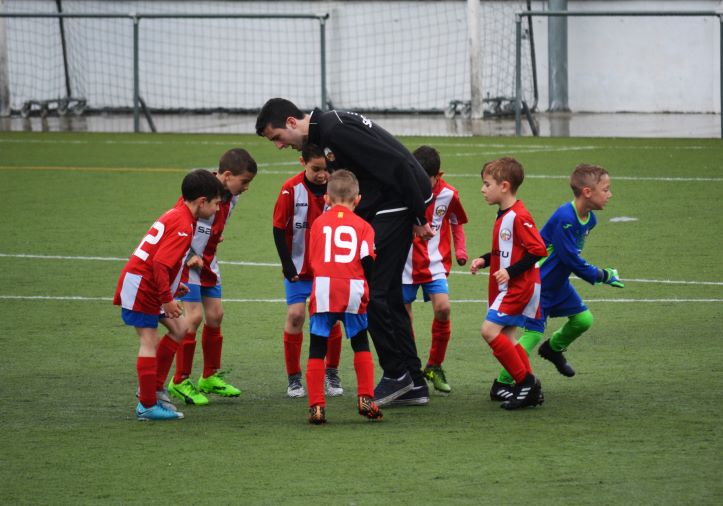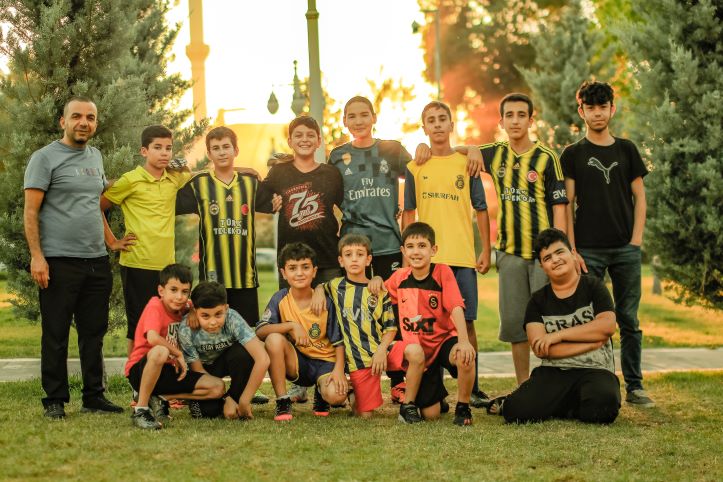In a world where screens often steal the spotlight, a universal concern arises – how to motivate a lazy child in sports? This blog delves into the heart of this challenge, offering guidance to parents and caregivers who find themselves facing the age-old struggle of motivating their children to embrace active lifestyles.
With the ever-present allure of digital entertainment, it’s no surprise that many kids might need an extra nudge to step onto the sports field. But fear not, for within these virtual pages, you’ll discover a treasure trove of strategies that bring vitality to the lives of youngsters. Let’s unravel the layers of this concern and unearth the hidden gems that lie in nurturing active habits right from the start.
Why Do Kids Lose Interest in Sports?
It’s a common concern among parents: the gradual wane of interest that kids often display towards sports. While every child is different, there are a few common factors that can contribute to this shift. Let’s delve into some reasons behind the dwindling enthusiasm:
Changing Priorities: As children grow, their interests naturally diversify. What was once a favorite sport might take a backseat to new hobbies, school commitments, or social interactions.
Pressure and Expectations: The weight of expectations, whether from parents, coaches, or peers, can turn a once-enjoyable activity into a stressor. Kids might retreat when they feel the pressure to perform flawlessly.
Lack of Variety: Repetition can lead to boredom. If the sports routine lacks creativity or becomes monotonous, kids may seek novelty elsewhere.
Peer Influences: Friends play a significant role in shaping preferences. If their friends lose interest in sports, kids might follow suit to maintain a sense of belonging.
Negative Experiences: A bad experience, such as an embarrassing moment or a conflict with a teammate, can taint a child’s perception of the sport, making them hesitant to continue.
Best 9 Strategies to Motivate a Lazy Child in Sports
# Assess the Situation: Identify the Root Causes of Inactivity
When it comes to your child’s lack of interest in sports, a deeper exploration is essential. Is it the allure of digital worlds that keeps them seated, or does something more profound lie beneath the surface? Delve into the world of possibilities to uncover what’s truly at play.
Psychological Aspects
When it comes to motivating a hesitant child in sports, understanding the psychological factors that contribute to their inactivity is key. Here’s a breakdown of these aspects in simple points:
- Fear of Failure: Children, like adults, can fear not meeting expectations. The pressure to perform well in sports can sometimes be intimidating, leading them to avoid participating altogether.
- Lack of Confidence: A child’s self-esteem plays a significant role. If they feel they lack the skills needed for a particular sport, they might shy away from it to avoid potential embarrassment.
- Peer Pressure: Kids are highly influenced by their peers. If their friends show disinterest in sports, your child might feel inclined to do the same to fit in, even if they have a latent interest.

# Build a Foundation for Motivation
As parents, we have the incredible opportunity to shape our children’s attitudes towards sports. By fostering a supportive environment, we can lay the groundwork for lasting motivation. Here’s how positive parenting comes into play:
Encouragement vs. Pressure
Finding the sweet spot between encouragement and pressure is vital. While nudging your child towards sports is important, bombarding them with expectations can have the opposite effect. Offer praise for their efforts, celebrate their progress, and let them know that their happiness matters more than winning.
Active Communication
Communication is key in any relationship, including the one with your child. Initiate a genuine conversation about sports. Listen to their thoughts, understand their likes and dislikes, and show empathy towards their concerns. By involving them in decisions about which sports to try, you not only show respect for their choices but also create an environment where they feel heard and valued.
# Craft a Supportive Environment
When it comes to motivating your child in sports, creating an environment that fosters enjoyment is key. By making sports appealing and integrating them into your family life, you can lay the foundation for a lifelong love of physical activity. Here’s how to do it:
Let Your Child Choose
Empower your child by letting them choose the sports they want to explore. By giving them the freedom to make decisions, you not only cater to their interests but also boost their sense of autonomy. This ownership can turn sports from a chore into a delightful adventure, as they engage in activities they’re genuinely excited about.
Family Involvement
Transform sports into family bonding time. Instead of simply dropping your child off at practice, consider participating alongside them. Whether it’s a game of catch, a bike ride, or a simple jog in the park, involving the whole family makes physical activity fun and creates lasting memories. Plus, your enthusiastic participation can serve as a powerful motivator for your child to stay active.
# Set Achievable Goals
Motivating a child in sports often thrives on the power of accomplishment. By setting and achieving goals, your child’s motivation can soar as they witness their own growth. Begin with setting goals that are both attainable and concrete. Rather than aiming for a grand slam on their first day of baseball, consider a goal like hitting the ball three times during practice. Achievable objectives build confidence and provide stepping stones to greater feats. Make sure the goals are specific, measurable, and tailored to your child’s current skill level.
Celebrate Milestones
Acknowledging progress is essential to maintaining motivation. Celebrate even the tiniest milestones – hitting that ball, completing a lap, or mastering a new move. Small victories contribute to the larger journey and help your child see that their efforts lead to results. Offer praise, high-fives, or a special treat to make these achievements feel rewarding and special.
# Create Consistency
Building motivation in sports isn’t just about bursts of enthusiasm; it’s about cultivating a steady rhythm. By integrating routine and discipline, you pave the way for lasting results that become second nature to your child. Let’s explore how to establish this consistency:
Establishing a Schedule
Consistency thrives on routine. Set specific times for sports practice, making it a non-negotiable part of the day. Whether it’s before or after school, consistency in timing helps your child anticipate and mentally prepare for the activity. This routine not only reinforces the importance of sports but also provides a sense of stability in their schedule.
Leading by Example
Children often mirror the behavior they see around them. Become a role model by embracing an active lifestyle yourself. Whether it’s a morning jog, a weekend hike, or playing your favorite sport, your active behavior showcases the value of physical activity. This not only fosters a deeper connection between you and your child but also encourages them to follow your lead.
# Inspiration Beyond the Field
Expand your child’s horizons by introducing them to the world of sports heroes and icons. Teach your child why Olympic games are important and it’s history. Share captivating stories of athletes who’ve overcome challenges and achieved greatness through determination and hard work. By delving into these narratives, your child gains not only admiration for their athletic prowess but also a deeper understanding of the values like perseverance, teamwork, and resilience that drive these legends.
These role models offer a treasure trove of life lessons, illustrating that success isn’t just about winning games, but also about embracing discipline, facing adversity, and staying dedicated to personal growth – valuable principles that extend far beyond the sports arena.
# Overcome Challenges
Navigating the world of sports comes with its fair share of hurdles, and as parents, it’s crucial to equip your child with the tools to overcome resistance and frustration. Here’s how you can support them on this journey:
Dealing with Setbacks
Acknowledge that setbacks are a natural part of any pursuit. Teach your child that failure isn’t a dead end but a detour to improvement. Encourage them to analyze what went wrong and how they can do better next time. By shifting their perspective, setbacks become stepping stones to success.
Patience and Encouragement
Frustration can easily dampen enthusiasm, but patience and encouragement are powerful antidotes. Be their steadfast supporter during challenging moments. Remind them that growth takes time and effort. Offer words of encouragement, highlighting their progress and reminding them of past triumphs. Your unwavering belief can turn their frustration into determination.
# Tailor the Approach
Just as every child is unique, so should be the approach to motivating them in sports. By tailoring your strategies to match their personality, you can unlock their true potential. Here’s how to cater to your child’s individuality:
Personalize Motivation: Recognizing What Works Best for Your Kid
One size doesn’t fit all when it comes to motivation. Observe your child closely to understand what drives them. Some might respond well to competition, while others thrive in a cooperative environment. Adjust your approach to match their preferences, ensuring they feel seen and understood.
Unleash Creativity
Injecting creativity into sports can be a game-changer. Discover new ways to make sports playful and engaging. Introduce variations, mini-challenges, or themed practices to keep things exciting. This not only prevents monotony but also taps into your child’s imagination, making sports a fun adventure.

# Know When to Pivot
As parents, it’s crucial to recognize when your child’s motivation might need a shift in direction. Here’s how to navigate this pivotal phase with sensitivity:
Identifying Genuine Disinterest vs. Temporary Hesitation
Pay attention to cues that signal a deeper lack of interest. Is your child consistently resistant or disengaged, even after trying various approaches? While a brief reluctance is normal, prolonged disinterest might indicate that the sport isn’t the right fit. On the other hand, if they exhibit hesitation due to newness or challenges, it might be a passing phase.
Introduce Different Physical Activities to Explore
If your child’s enthusiasm for a particular sport remains lukewarm, don’t be afraid to pivot. Introduce them to a variety of physical activities, from dance to swimming to martial arts. Their true passion might lie beyond the realm of their current sport. By exploring alternatives, you give them the opportunity to find an activity that genuinely resonates with their interests and strengths.
Conclusion
As we wrap up this journey on how to motivate a lazy child in sports, it’s evident that the impact extends far beyond the playing field. By instilling a love for physical activity, we’re nurturing a foundation for lifelong health and well-being. But it’s more than just the physical aspect – engaging in sports shapes character. It teaches discipline, teamwork, perseverance, and resilience – qualities that serve as cornerstones for success in all areas of life.
With every practice, every game, and every hurdle overcome, children are planting seeds for their future selves. They’re learning not only the joy of movement but also the importance of embracing challenges and pushing boundaries. So, as parents and caregivers, let’s continue to foster an environment where sports aren’t just an activity but a pathway to a healthier, happier, and more confident tomorrow.
Learn how to motivate the youth of today for further knowledge.








